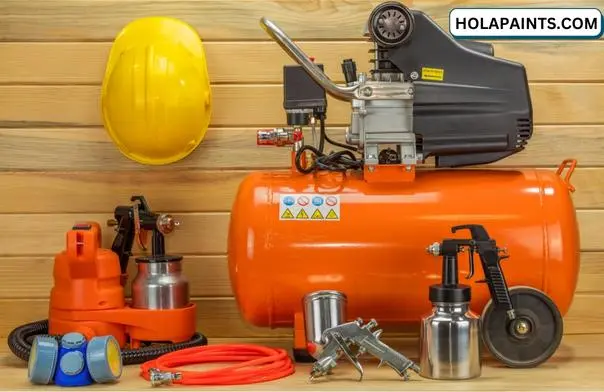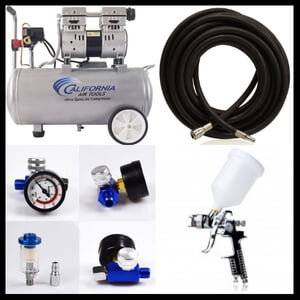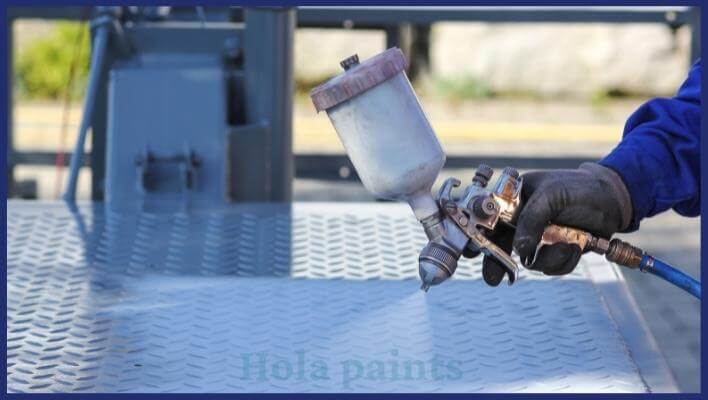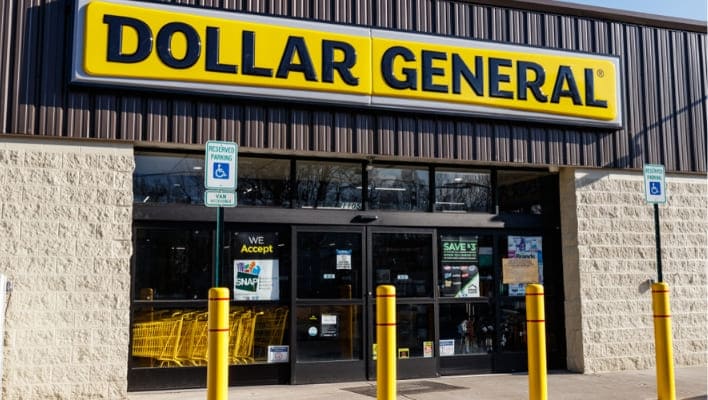Do you get bored with old painting methods using brushes and rollers because they are no longer efficient or exciting? If so, here’s an alternative to your problem. You might be surprised to know that an air compressor for spray painting can eliminate the orange peel problem and help you achieve a smooth finish on your paint job.
The paint compressor should be compatible with your spray gun since it has various pressure limits, which is why you need to choose the right one for your project. Choosing the right air compressor for spraying paint has a number of factors to consider. Let’s have a look at it!

Table of Contents
- What Size Air Compressor for Spray Painting?
- 1. CFM
- 2. Paint spraying Pressure
- 3. Tank Size
- 4. Weight and Durability
- 5. Portable Compressors for Spray Painting
- 6. Moisture Separator
- 7. Horsepower
- 8. Fuel
- 9. Warranty Note
- What type of air compressor do I need for spray painting?
- Reciprocating Air Compressors: (Piston-Type)
- Rotary Screw Air Compressors:
- Other Types Of Compressors:
- Centrifugal Air Compressors:
- Scroll Air Compressors:
- Portable Air Compressors:
- Oil-Free Air Compressors:
- High-Pressure Air Compressors:
- How an air compressor For Paint Sprayer works?
- How To Use An Air Compressor For Spray Painting?
- Requirements For Spray Painting:
- How do I know what size hose for my air compressor?
- Can you use any size hose for an air compressor?
- What size air hose do I need for my compressor spray gun?
- Can I use a Long air hose for a paint sprayer?
- How Do You Maintain An Air Compressor?
- Maintenance Tips For Air Compressors
- Bottom line On an Air Compressor For Spray Painting:
- FAQs on Selection of An Air Compressor For Spray Painting
- Q. What is the best size of air compressor for spray painting?
- Q. Can you suggest the type of air compressor used for spray painting?
- Q. Do two-stage air compressors perform better than single-stage ones?
- Q. How much CFM is recommended to spray paint?
- Q. Is it possible to spray paint with a 50 liters compressor?
What Size Air Compressor for Spray Painting?

You’ll learn everything you need to know about air compressor paint sprayers and the required technical elements of an air compressor for spray painting. Fortunately, with our experience and extensive research, you’ll be able to make quick decisions about choosing a suitable air compressor for spray painting any project.
Once you know the requirements and use of a spray gun with a new compressor, you can complete each paint task with high quality. Plus, we are here to help you to get the best spray gun for cars, kitchen or bathroom cabinets, fences and much more.
Buying an air compressor for painting house is the right choice if you consider these factors.
1. CFM
CFM measures how much air moves in a minute. It is one of the key factors when it comes to choosing an air compressor for spray painting. The CFM requirements for spray guns vary from model to model, smaller spray guns requiring less CFM than larger ones.
For instance, some small spray guns may require less than 10 CFM, while bigger ones might need more.
To ensure smooth operation and good results, it’s a good idea to have a compressor that can deliver at least 12 CFM for spray painting tasks. This ensures that you have enough airflow to handle the job effectively. Therefore, you need to know the CFM requirements of your spray gun.
For HVLP spray guns especially, they need a lot of air, so you’ll typically need a larger compressor to make sure you’re getting enough airflow for proper use.
If the compressor can’t keep up with the spray gun’s demand, you might experience problems like a drop in pressure or a loss of volume. These issues can lead to uneven coverage when you’re painting or spraying. So, take note of this point carefully. We recommend a high CFM rating of your compressor for constant operation.
In industrial settings where more powerful painting tools are used, air compressors with CFM ratings ranging from 14 to 110 are commonly employed. This wide range covers various needs based on the scale and requirements of the painting tasks at hand.
2. Paint spraying Pressure
Spray guns using compressed air are categorized into two main types.
1. The high volume low-pressure spray gun
2. The low volume low-pressure spray gun
Paint sprayer PSI is the unit of pressure for spray painting. When you’re using an HVLP spray gun, the air pressure it operates at typically falls within the range of 25 to 30 (PSI). This range is suitable for tasks like spraying cars, where you want a nice, even coat of paint without excessive overspray.
However, there are situations where you might need higher atomization, which means breaking up the paint particles into smaller droplets for a finer finish. In those cases, you might increase the air pressure to around 40 PSI.
Learn more about the pressure setting for paint spray gun!
3. Tank Size
It is also important to consider the size of your compressor’s tank. Paint sprayers need a constant flow of air from the compressor to work correctly. Thus, the tank needs to be more significant to meet this demand.
The minimum size air compressor for painting a car is a 30-gallon. However, When selecting a compressor for painting, the CFM rating is more important than the tank size.
It is best to buy a sprayer with a large tank of 60 gallons or more. The higher the capacity of the tank, the more efficient the compressor will be to release consistent airflow over a larger surface area.
4. Weight and Durability
The high quality and durability of metals will make a product long-lasting, but at the same time, it can be cumbersome.
Therefore, it is advisable to consider both durability and weight before purchasing an air compressor to last for many years.
5. Portable Compressors for Spray Painting
The portability requirements for your painting tasks depend on your work environment.
Portable compressors aren’t an issue if you’re using them in a workshop. With a long enough high-pressure hose and a compressor, you can paint throughout your entire garage without taking it anywhere.
Moreover, a portable unit is a better choice than a non-portable one for household painting purposes.
6. Moisture Separator
Most compressors on the market include regulators at the pump, but not all come with moisture traps.
A moisture filter aims to filter out condensation that forms in the air coming from a tank.
Paint application can be affected by moisture, leading to bubbles, mainly when painting smooth surfaces like cars. The best solution is to install a moisture trap in your airline.
7. Horsepower
The next factor, horsepower specifies how much work an air compressor can handle, and it also represents its motor efficiency. A unit with more horsepower is highly recommended if you plan to use your air compressor for multiple painting projects.
8. Fuel
It is also essential to ensure that the correct fuel powers a compressor. You can either use gas or electricity as fuel.
Electric air compressors are more budget-friendly and efficient to use. In contrast, the gas-powered air compressor has the advantage of being more reliable and versatile, mainly if you will use it outdoors.
However, you should avoid using gas-filled air compressors in enclosed areas or indoor projects, which may produce pollution.
9. Warranty Note
When purchasing expensive tools like air compressors, always be sure to read the warranty conditions. The warranty of most reliable brands ranges from one to three years.
In light of our experience, we are sharing a few simple tips for operating different types of air compressors effectively.
You can turn on electric compressors simply by plugging them in. However, you must let the pressure build-up for a few minutes before you can use it for anything.
On the other hand, If the compressor is powered by gas, you may have to prime it and then pull the ripcord to turn it on.
Furthermore, the manual instruction provides the most detailed information about your specific spray gun. You might find it helpful to read it.
What type of air compressor do I need for spray painting?
The popular choices of air compressor for spray painting are piston-type compressor and rotary screw air compressor:
Reciprocating Air Compressors: (Piston-Type)
These compressors work like a car engine, using pistons to compress air. They’re versatile, great for tasks like powering tools and painting. They’re affordable, easy to maintain, and can handle various pressure levels.
Strengths: Versatile, affordable, easy to maintain, suitable for moderate workloads.
Suitable Applications: Powering pneumatic tools, spray painting, inflating tires, smaller-scale industrial tasks.
Rotary Screw Air Compressors:
These compressors utilize rotating screws instead of pistons to continuously compress air. These screws mesh together to reduce the volume of the air, generating higher pressure. They’re efficient and reliable, perfect for industrial use where heavy machinery operates. Although they’re pricier upfront, they save energy and need less upkeep compared to piston models.
Strengths: Continuous operation, high efficiency, reliability, low energy consumption, low maintenance.
Suitable Applications: Industrial settings with heavy machinery, manufacturing processes requiring constant compressed air, larger painting projects.
Other Types Of Compressors:
Centrifugal Air Compressors:
These compressors use spinning blades to increase air pressure efficiently. They’re common in large-scale industries like power generation.
Strengths: High efficiency, ideal for large-scale industrial applications, can handle high capacities.
Suitable Applications: Power generation, air separation plants, large-scale manufacturing processes.
Scroll Air Compressors:
These compressors use scroll-shaped components to compress air quietly. They’re ideal for places needing clean air, like medical facilities and labs.
Strengths: Quiet operation, oil-free air production, suitable for applications requiring clean air.
Suitable Applications: Medical equipment, laboratories, clean-room environments, electronics manufacturing.
Portable Air Compressors:
Compact and easy to carry, these compressors are handy for tasks like inflating tires and powering tools at construction sites.
Strengths: Compact, easy to transport, versatile for various tasks.
Suitable Applications: Construction sites, automotive repair, DIY projects, remote locations.
Oil-Free Air Compressors:
Designed for clean air production, these are used in industries like pharmaceuticals and electronics, where air quality is important.
Strengths: Produces clean, oil-free air, crucial for sensitive applications.
Suitable Applications: Pharmaceutical manufacturing, food processing, electronics manufacturing, environments where air quality is critical.
High-Pressure Air Compressors:
These compressors are specialized for tasks needing very high air pressure, like diving or firefighting.
Strengths: Capable of delivering extremely high pressures.
Suitable Applications: Diving operations, firefighting, powering high-pressure pneumatic tools, specialized industrial processes
How an air compressor For Paint Sprayer works?
Motors and engines are used to compress air and force it into the pressurized flow to drive another operation. Compressed air is typically used to deliver paint through nozzles in an even, strong flow during the process of painting cars.
The air compressor of a spray paint system works by breaking up paint with pressurized air and producing a fine mist of paint through a nozzle. A compressor for auto painting delivers enough air to form fine, liquid particles that make the paint adhere evenly to the vehicle.
The use of a compressor for auto painting is both faster and easier than alternative methods because it offers a consistent flow of paint that ensures efficient use. It ensures complete coverage, even in difficult-to-access areas, without the requirement to manually check that the paint covers every part.
How To Use An Air Compressor For Spray Painting?
If you are trying to figure out how to use your spray gun after buying a new compressor, then you must check the precautions of spray compressor before starting a painting:
Precautions:
- Do not use damaged or punctured air compressors for safety reasons as the high pressure can cause an explosion that may seriously injure or even cause death.
- Always use protective equipment such as gloves, a respirator or mask, and goggles before starting work.
Requirements For Spray Painting:
- A mask, gloves, and goggles.
- The suitable compressor for your paint gun.
- Flexible air compressor hose.
- Spray gun accessories.
To get started, follow these steps:
- Wear safety gear before you start any work.
- Your air compressor should be linked to your air spray gun using a hose or other attachments.
- An air compressor must have enough CFM.
- You must mix paint and primer with solvent according to the specified ratios.
- Testing the spray pattern on cardboard is a good way to make sure the gun is ready to operate.
- Most HVLP spray guns allow you to adjust the spray pattern with an adjustable knob.
- After applying a paint coat to your surface, you must enable it to dry for 12-24 hours.
How do I know what size hose for my air compressor?
As a general rule, the higher the air tool’s CFM requirement, the larger the hose you’ll need.
Can you use any size hose for an air compressor?
If the hose is too narrow or too long, it can cause pressure problems. For example, hoses with a 5/16 inch (7.9 mm) diameter deliver less pressure than hoses with a 3/8 inch (9.5 mm) diameter. There is less air pressure delivered to the gun when the inside diameter of the air hose is smaller.
What size air hose do I need for my compressor spray gun?
Spray guns that use HVLP typically have an ID of at least 1/4 inches, and a hose that is at least 5/16 inches in diameter is needed to meet the typical HVLP volume requirements. However, the bigger isn’t necessarily better. When a hose is bigger, it often means it is longer, which should also be considered.
Can I use a Long air hose for a paint sprayer?
An air compressor’s air pressure decreases with distance, so a long hose can negatively affect a high-pressure paint gun. As a general rule, a hose with a decent inside diameter and short length is best.
How Do You Maintain An Air Compressor?
All types of air compressors require some level of maintenance to function correctly. It is advisable to check key components of the air compressor each time you use it and then service them if necessary. In this way, your air compressor will run more efficiently for more prolonged use.
Maintenance Tips For Air Compressors
- The user manual is your best guide to troubleshooting your air compressor. Never perform any repairs on your air compressor without reading the manual.
- The oil in a compressor should be changed whenever necessary.
- With continuous use of an air compressor every month, some nuts and bolts are bound to become loose. Vibrations typically cause this looseness.
- Loose nuts and bolts are not an indication that the machine is about to collapse, and this sign indicates that it is time to tighten them up.
- An air compressor must have a clean intake valve and connectors to work at total capacity.
- Inspect the hoses regularly to ensure the compressor is not affected by damaged hoses.
- Even the air filter itself can exceed its limits, so an annual inspection of the filter is essential.
- Moisture in the paint tank can also degrade the quality of pneumatic painting, so it is always a good idea to drain it regularly.
- You should clean fuel tanks annually because they eventually become poisonous if not cleaned properly.
- There are safety shutoff mechanisms connected to compressors that are activated when pressure or temperature exceeds safe levels. You can refer to your user guide for information about inspecting and ensuring the proper operation of your safety system.
Bottom line On an Air Compressor For Spray Painting:
This article has tried to provide a clear picture of what your air compressor will require to handle indoor and outdoor painting projects.
Plus, If you plan to use an HVLP spray gun, you will need an air compressor that maintains constant air pressure to achieve the desired finish. A good air compressor will work well with most types of paint sprayers so that you can pick your favorite sprayer.
Using an air compressor for painting a house can save on material and time while ensuring a perfectly even finish on any surface. Hopefully, you will find the perfect air compressor for spray painting!
FAQs on Selection of An Air Compressor For Spray Painting
Q. What is the best size of air compressor for spray painting?
It is recommended to pick an air compressor with a 60-gallon tank that offers 14 to 20 CFM to operate a quality paint gun.
Q. Can you suggest the type of air compressor used for spray painting?
Spray painting is easy with Pancake air compressors, especially for small tasks because they are small and lightweight.
Q. Do two-stage air compressors perform better than single-stage ones?
An air compressor motor with two stages can deliver twice as much power as a single-stage compressor. So, if you are planning for large-scale paint jobs, it is good to have a two-stage motor.
Moreover, two-stage compressors reduce the risk of overheating and pump more CFM than one-stage models, which results in greater efficiency.
Q. How much CFM is recommended to spray paint?
Considering cubic feet per minute is the essential factor when looking for spray guns and air compressors. Most paint spray guns require 12-20 CFM that is suitable for optimal performance.
It would be best to choose the correct pressure (PSI) for spray painting, depending on your project and the spray gun you have. If you plan to apply a clear coat with an LVLP gun, you need to set the pressure at about 20-25 PSI, while 17 PSI is suitable for a base coat.
On the other hand, an HVLP sprayer can apply the base coat at 26-29 PSI. However, a 28-29 PSI setting will ensure better atomization and a smooth airflow for the clear coat in HVLP systems.
Q. Is it possible to spray paint with a 50 liters compressor?
A 2.5 HP motor delivers up to 9.5 CFM. A 50 liter tank is perfect for spraying, sanding, drilling, and cutting. Painting a car needs a much larger tank than 50 liters. A minimum of 100 liters is required for car painting.

Jennifer Marie
Jennifer Marie is a general contractor with over the years of experience in home remodeling, DIY projects, and commercial painting projects. Her experience includes working with paint sprayers, painting tools, and other painting supplies. You can follow her on Facebook.


